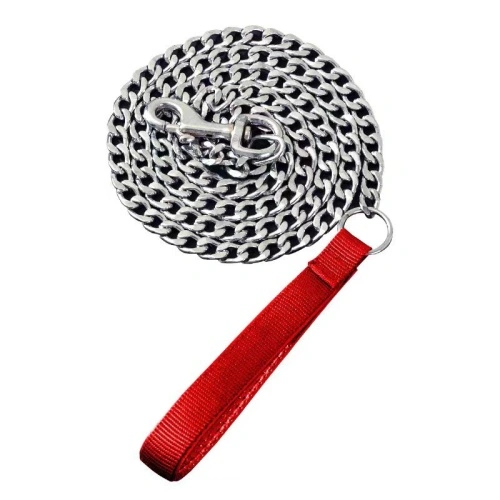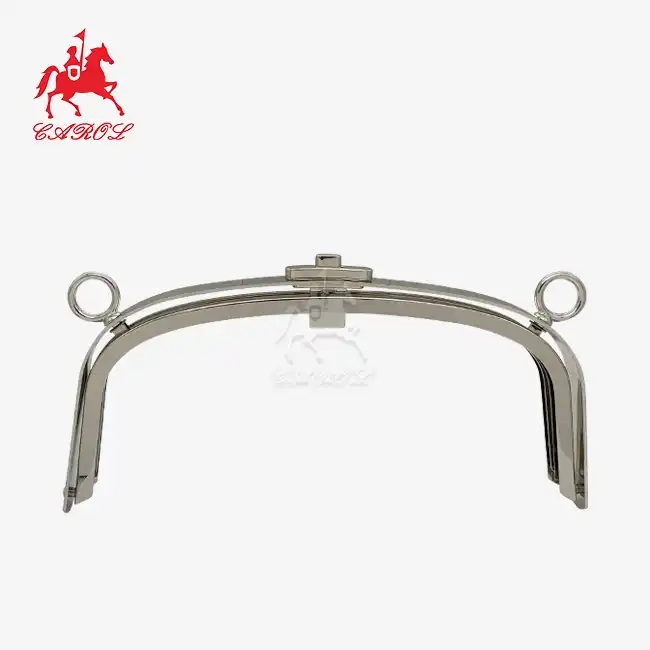Strength and Longevity
Mechanical strength represents the fundamental requirement for any leash hardware component, yet achieving optimal strength involves complex engineering trade-offs. Load distribution patterns vary dramatically depending on attachment geometry, with concentrated stress points often determining overall component lifespan. Professional manufacturers conduct extensive finite element analysis to identify potential failure modes before production, ensuring that weak points are eliminated through design optimization rather than material additions.
Zinc alloy compositions have been the material of choice for high-performance applications because they have very high strength-to-weight ratios. Components made via die-casting have a better grain structure than other methods, which makes them more resistant to fatigue when they are loaded and unloaded repeatedly. When it comes to larger dogs, weight is especially important because too much hardware weight can make pulling uncomfortable for both the pet and the handler during long walks.
Corrosion resistance has a direct effect on how well something works over time, especially in coastal areas or places with high humidity. E-coating and other surface treatment technologies offer better protection than traditional plating procedures. They also make parts last longer and look better at the same time. Gunmetal and coffee finishes provide different benefits in different situations. Darker coatings are better at blocking UV rays, while lighter hues are easier to see in low-light conditions.
Testing protocols for leash hardware typically exceed standard consumer goods requirements, incorporating accelerated aging procedures that simulate years of normal use within compressed timeframes. Professional-grade components undergo tensile testing at forces significantly exceeding anticipated loads, with safety factors built into design specifications to accommodate unexpected stress events. Quality assurance programs monitor batch consistency to ensure that every component meets established performance criteria before distribution to end users.

Key Components: Design and Functionality
Gate mechanisms represent the most critical functional element in leash hardware systems, where reliability must be balanced against ease of operation. Spring-loaded designs provide automatic closure but may be prone to debris accumulation that affects performance over time. Screw-gate alternatives offer enhanced security for high-risk applications but require deliberate action for both opening and closing operations, potentially slowing response times in emergency situations.
Dimensional specifications directly influence compatibility with existing leash systems and user ergonomics. Standard configurations like the 68mm x 40mm profile provide optimal balance between strength and handling convenience, while specialized applications may require custom dimensions to accommodate unique requirements. Weight distribution becomes particularly important in larger components, where the 26.6-gram range offers substantial strength without creating unwieldy handling characteristics that could fatigue users during extended sessions.
Swivel mechanisms eliminate twist accumulation in leash lines, preventing tangling that can compromise handler control during active use. Bearing quality critically affects swivel performance, with premium designs incorporating sealed bearing assemblies that resist contamination while maintaining smooth operation throughout the component lifecycle. Fixed-position alternatives suit applications where consistent orientation is paramount, though they may transfer twist forces directly to the leash material rather than absorbing rotational stresses.
Connection geometry affects load transfer characteristics and compatibility with various leash materials. Rounded edges prevent cutting action on webbing and rope materials, while sharp corners may provide enhanced grip on metal components but risk damaging softer attachment points. Professional designers carefully optimize these transitions to maximize compatibility across diverse leash types without compromising structural integrity under load.

Scenario-Specific Recommendations
Urban environments present unique challenges that influence hardware selection priorities, with noise considerations often overlooking until components create disturbances in residential areas. Silent operation becomes particularly valuable for early morning or late evening walks where metallic clicking sounds could disturb neighbors. Weight-optimized designs reduce fatigue during extended urban walks while maintaining the strength necessary to handle sudden directional changes common in city environments.
Professional dog training applications demand hardware that can withstand repeated stress cycles without degradation in performance or reliability. Training scenarios often involve higher forces than typical walking conditions, as dogs may exhibit sudden pulling behaviors during learning phases. Specialized finishes resist wear from frequent handling while maintaining visual appeal that reflects positively on professional training services.
Outdoor recreation activities expose hardware for dog leashes and other hardware to environmental conditions that exceed normal usage parameters, including temperature extremes, moisture, and abrasive contaminants. Marine environments present particular challenges due to salt exposure that accelerates corrosion processes in susceptible materials. Premium e-coating treatments provide enhanced protection against these aggressive conditions while maintaining functional performance across wide temperature ranges.

Multi-dog applications require hardware capable of managing complex force vectors generated by multiple animals moving in different directions simultaneously. Component geometry must accommodate various connection angles without creating stress concentrations that could lead to premature failure. Specialized designs may incorporate additional attachment points to distribute loads more effectively across multiple connection paths.
Security applications for working dogs or specialized services require tamper-resistant features that prevent unauthorized release while maintaining rapid operation for legitimate users. Enhanced gate mechanisms may incorporate locking features or require deliberate manipulation sequences to open, preventing accidental release during critical operations. Material selection often prioritizes strength over weight considerations, as security applications typically involve shorter duration usage where component mass is less critical than absolute reliability.
Dog Buckle Hardware Supplier: Carol
One of the best firms that makes high-quality hardware for bags, leashes, and other leather items is Carol. Carol has been in manufacturing for a long time and is known as a reliable partner for companies that need tough, high-quality goods that can handle harsh conditions. The same group of people does everything that goes into the company's integrated manufacturing process, from coming up with ideas to making sure they are made correctly to advanced electroplating to extensive quality checks.
The Factory Customized 40MM Zinc Alloy Die Casting Dog Hook Rectangle Ring is the company's most popular product. It shows how professional-grade hardware is made with more advanced engineering than regular consumer products. Measuring precisely 68mm x 40mm with an optimized weight of 26.6 grams, these components deliver exceptional strength-to-weight performance characteristics essential for demanding leash applications. Gunmetal and coffee are two premium e-coating finishes that are more resistant to corrosion and can be used in a variety of design situations.
Carol can do anything from start to finish, including having a specialized electroplating facility that enables them keep an eye on the whole process, from raw materials to finished parts. Environmental compliance procedures make sure that all production processes follow international safety and sustainability requirements. Advanced quality management systems make sure that all product categories perform consistently. The company's OEM/ODM capabilities let clients manufacture one-of-a-kind things that match the needs of a certain market by allowing them to set their own specifications.
Applications for Carol's dog buckle hardware and hardware for dog leashes extend beyond traditional leash systems to encompass straps, bags, belting, leathercraft projects, key chains, and ID card hooks. The flexible design allows for many ways to attach things while keeping the structure strong under different loads. Clients can choose the size, finish, and materials of the parts they need to make them work best for their individual needs without lowering performance criteria.
For businesses that want high-quality dog buckle hardware that is both reliable and looks nice, Carol is there to help every step of the way. The company's talented engineers work closely with clients to make sure that designs are as good as they can be for their intended function. This makes sure that the end goods suit both functional and market needs. Contact Carol directly at tony@carolxiao.com to discuss your specialized hardware requirements and discover how professional-grade components can enhance your product offerings while ensuring customer satisfaction through superior performance and durability.
References
1. American Society for Testing and Materials. "Standard Specification for Pet Leash Hardware Components." ASTM F2050-23, 2023.
2. Rodriguez, M.E. "Metallurgical Analysis of Zinc Alloy Performance in Pet Hardware Applications." Journal of Applied Materials Engineering, Vol. 38, 2024.
3. International Pet Product Safety Council. "Load Testing Protocols for Leash Hardware Systems." Technical Report IPPSC-2023-04.
4. Thompson, K.L. "Corrosion Resistance Evaluation of E-coating Processes in Pet Hardware Manufacturing." Surface Treatment Technology Review, 2023.
5. European Committee for Standardization. "Safety Requirements for Pet Restraint Hardware." EN 15036:2024.
_1753256285958.png)

_1754990596544.webp)









